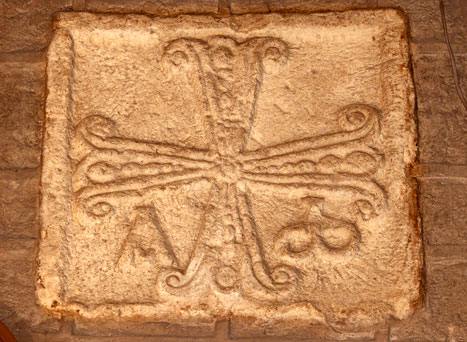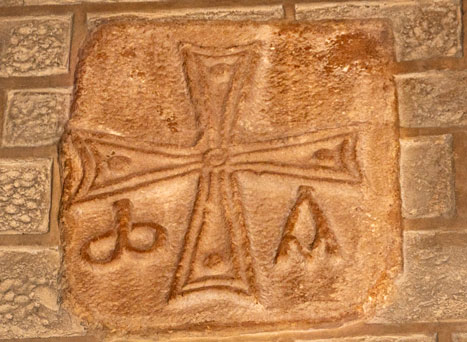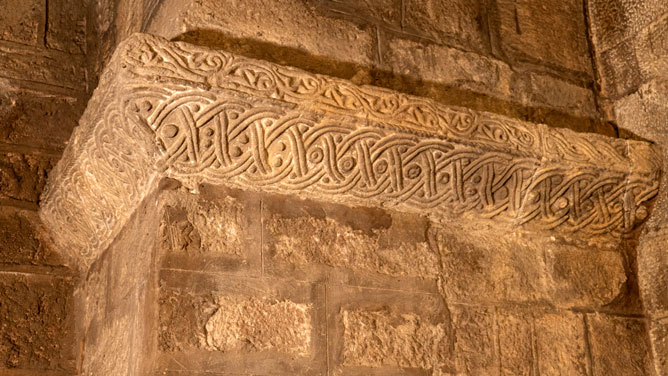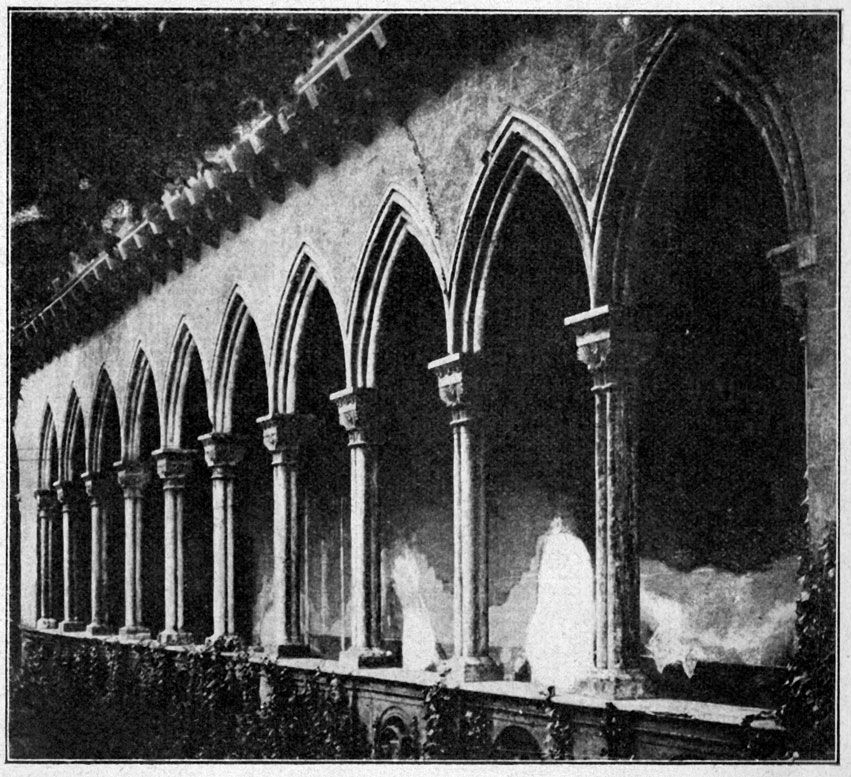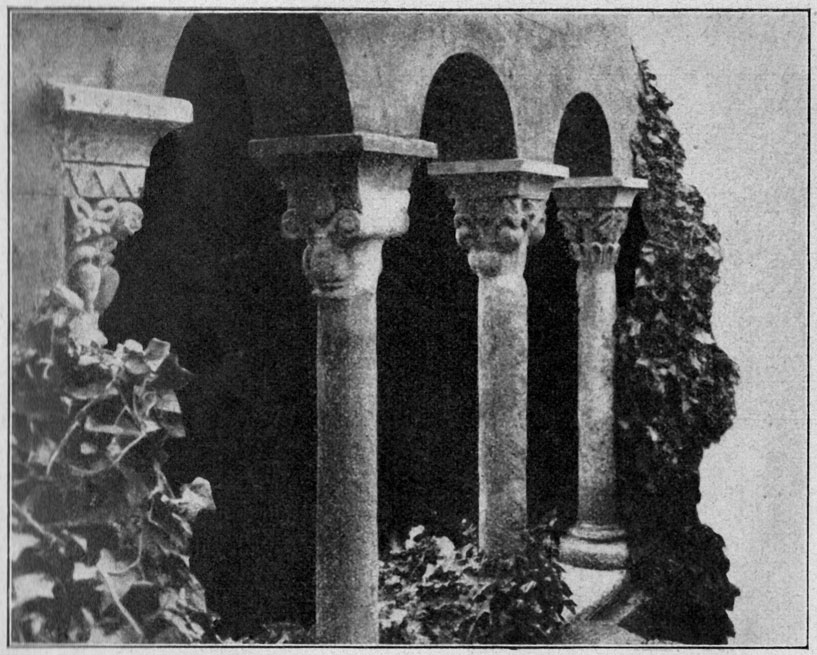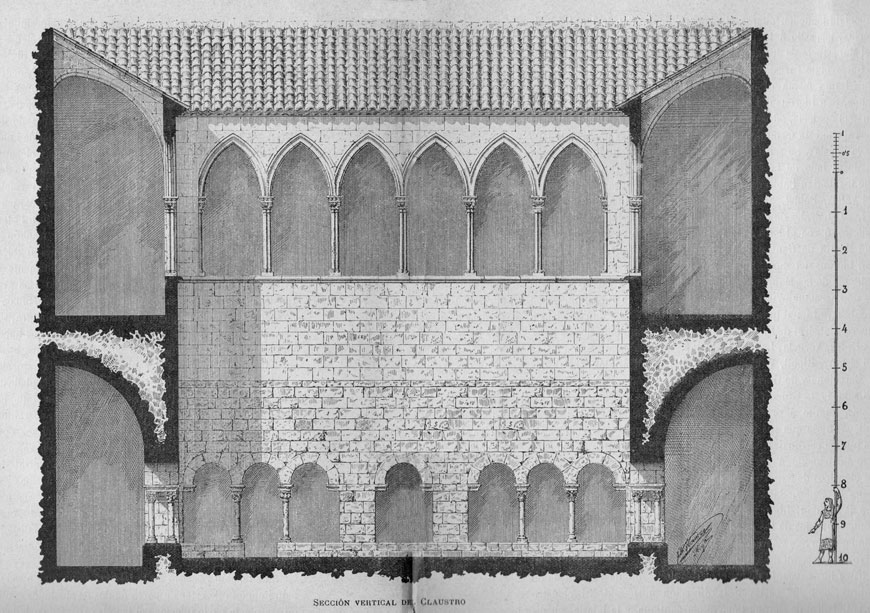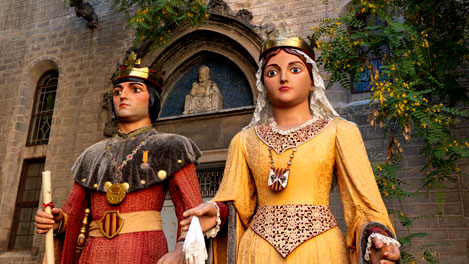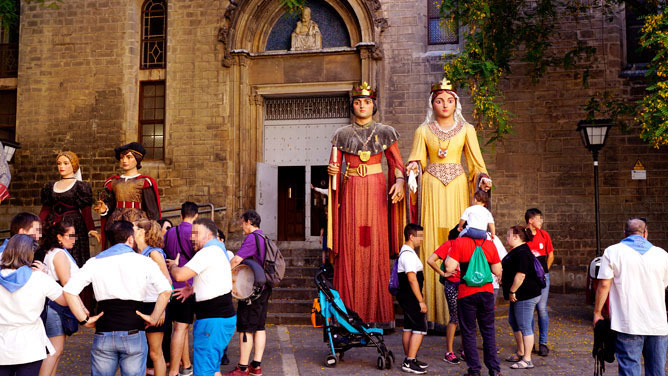The church of Sant Pere de las Puel·les is an historic building located in the Plaza de San Pere, in the ancient part of the city of Barcelona.
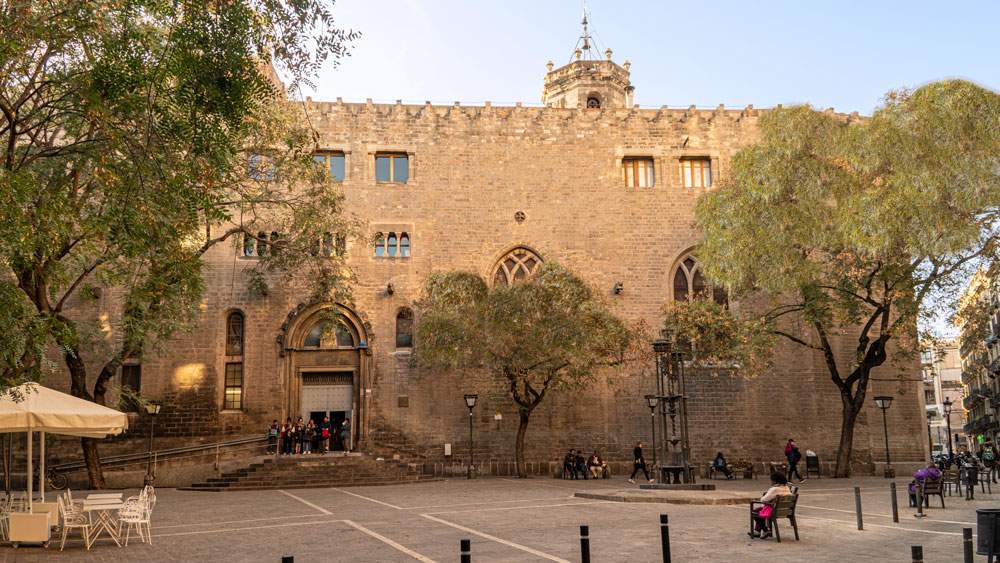
The story says that Luis el Piadós, Charlemagne’s son, built a small church dedicated to San Saturnino in 801. From this ancient pre-Romanesque building there are some remains: a tombstone where you can see written: “OBIT ERA 891”, some sculpted imposts and reliefs with a cross, and Greek letters: Alpha and Omega.
In 945, the Count of Barcelona, Sunyer I, and his wife, Riquilda, made built a Benedictine nuns monastery dedicated to San Pere. The document of consecration of 945 is still kept here and it is known that Sunyer’s son, Borrell II, the first sovereign count of Catalonia, attended the consecration.
In 985, the monastery was totally destroyed by the raid of Almanzor. A short time later it was rebuilt. In the 12th century, the Almoravids destroyed the monastery again. On January 13, 1143 the temple was once again consecrated and it entered the era of its maximum splendor that lasted from the twelfth to the fifteenth century, approximately three hundred years, during which it enjoyed the protection of the Pope and King Alfonso I of Aragon. Around the monastery a village grew. This village, called Vilanova de San Pere, was formed by peasants and artisans dedicated to the art of textiles.
On June 5, 1697, French troops besieged the city and caused serious damage to the monastery and its church. In the war of Succession the fight between the Catalan forces and the Castilian-French army reached the monastery itself, which changed hands a total of eleven times, throughout a series of attacks and counterattacks. The battle between the two armies once again left the monastery and the church in disrepair. After all of that, the community of nuns was able to return to normal life, and they built a new bell tower and expanded the monastic units.
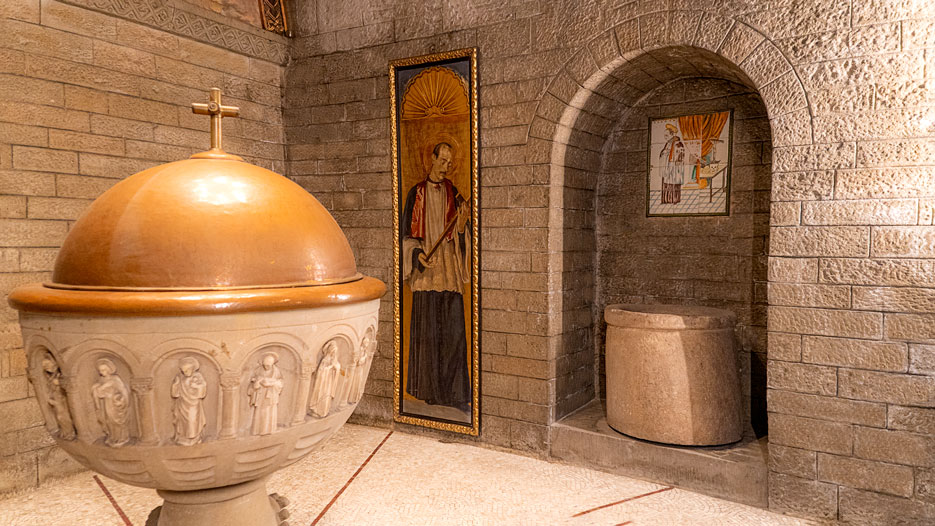
The entry of the French into Barcelona (1808) resulted in a new looting of the monastery and a partial destruction of the building. In 1814 the nuns were expelled and could not return until two years later.
In 1823 they were evicted again for five years, in order to convert the monastery into a prison. In 1835 the final expulsion was produced by the decree of confiscation. The monastery became a prison again. Later, the nuns began the construction of a new monastery (1877-1879) on Anglí Street in the upper part of the city.
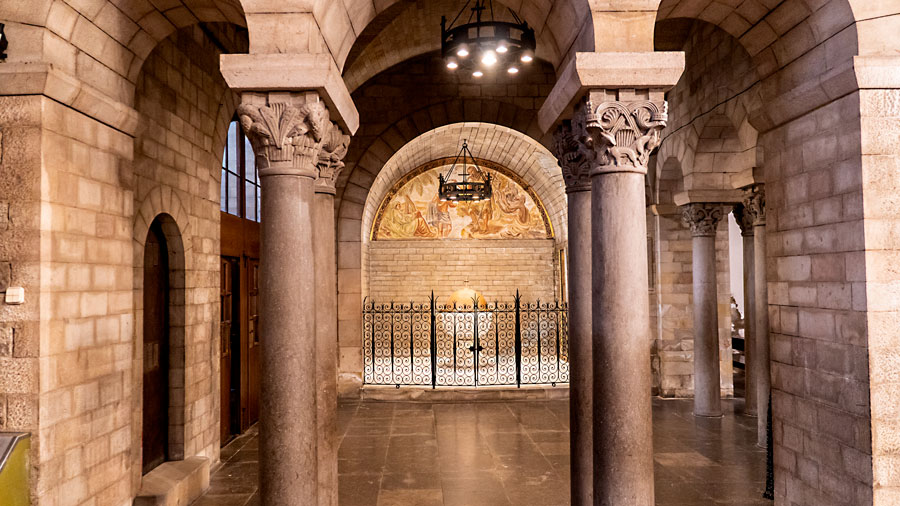
A few years later, the municipality of Barcelona decided to destroy the convent buildings and the double-floor cloister to build buildings destined to house the inhabitants of a city in full expansion.
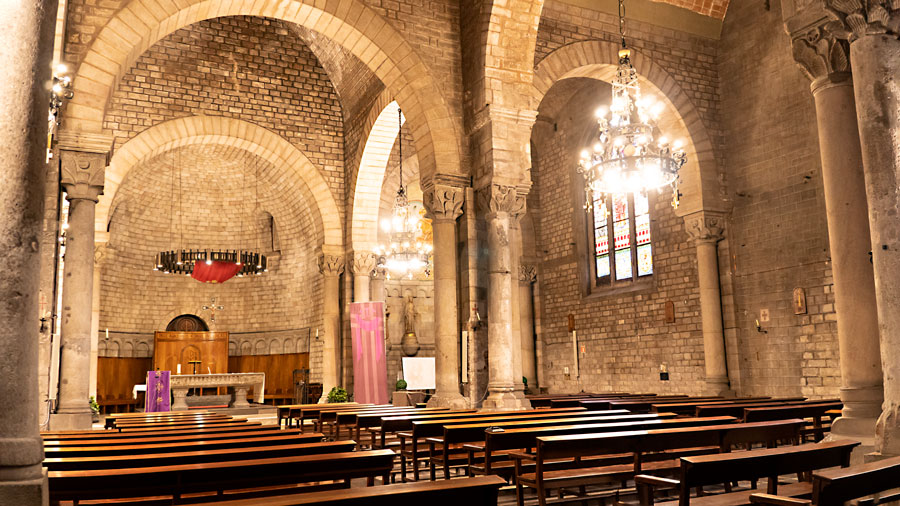
At the beginning of the 20th century only the church of San Pere remained. This was burned during the Tragic Week (1909) and the Romanesque bell tower, called “the tower of the Birds”, was destroyed, and the primitive chapel of Sant Sadurní was also damaged. The restoration of the church was entrusted to the architect Eduard Mercader who modified substantially the structure of the building. In 1936, it burned down again and some arches and columns were destroyed. In the following reconstructions its functionality as a parish building were taken into account, which gave it the appearance it currently has.
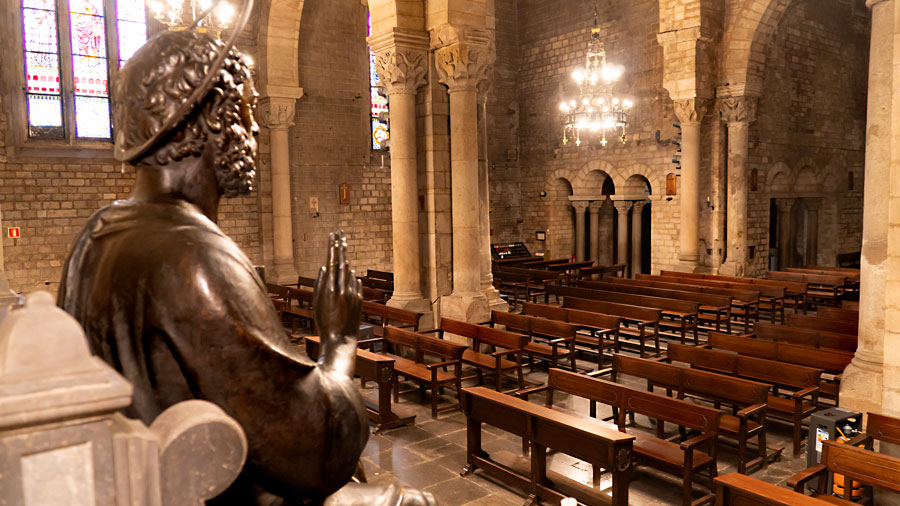
The church of Sant Pere de las Puel·les has been part of the historical events of the city of Barcelona throughout the last millennium. After the complicated vicissitudes –sometimes, very tragic– that have marked its destiny, the church of Sant Pere de las Puel·les continues to be witness to the most important historical events of the city. Full of peace and recollection, it welcomes believers and non-believers, and it’s an identifying sign of an entire neighbourhood.

